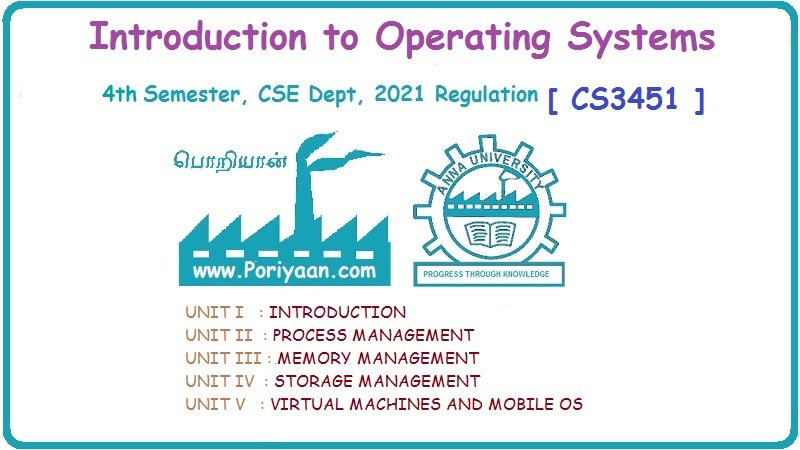Introduction to Operating Systems: Unit IV(a): Storage Management
Input-Output Device
Storage Management - Introduction to Operating Systems
I/O devices are divided into three types: Human readable, Machine readable and Communication.
Input-Output Device
• I/O devices are divided into three
types: Human readable, Machine readable and Communication.
1.
Human readable
• Computer user can communicate with computer using human
readable device. These devices are help to user for giving input to computer
and reading result.
• Example: Printer, display, keyboard
and mouse.
2.
Machine readable
• Machine readable is used for
communicating with electronic devices and components.
• Example: USB device, disk drivers,
controller, sensors etc.
3.
Communication
• This
type I/O devices used for communicating with remote devices.
• Example:
modem, digital line drivers
• I/O devices are differentiating on following
parameters.
1.
Data rate
2. Application used
3. Complexity of control
4. Error conditions
5. Data representation
6. Unit of transfer
1. Data rate:
will change according to the input output devices. There may be differences of
several orders of magnitude between the data transfer rates. Data transfer rate
of keyboard is the lowest among the entire I/O device.
2.
Application used: Different
devices have different use in the system.
3.
Complexity of control: It will
change according to the input-output devices. Printer requires a relatively
simple control interface. Disk is much more complex interface.
4.
Error conditions: The nature of
errors differ widely from one device to another.
5.
Data representation: Different data
encoding schemes are used for different devices.
6. Unit of transfer:
Data may be transferred as a stream of bytes or characters or in larger blocks.
Example 5.6.1 Why is it important to balance file-system I/O
among the disks and controllers on a system in a multitasking environment?
Solution: A system can perform only at the
speed of its slowest bottle-neck. Disks or disk controllers are frequently the
bottleneck in modern systems as their individual performance cannot keep up
with that of the CPU and system bus. By balancing I/O among disks and
controllers, neither an individual disk nor a controller is overwhelmed, so
that bottleneck is avoided.
Introduction to Operating Systems: Unit IV(a): Storage Management : Tag: : Storage Management - Introduction to Operating Systems - Input-Output Device
Related Topics
Related Subjects
Introduction to Operating Systems
CS3451 4th Semester CSE Dept | 2021 Regulation | 4th Semester CSE Dept 2021 Regulation
